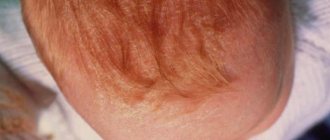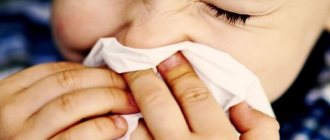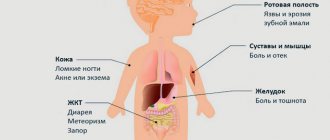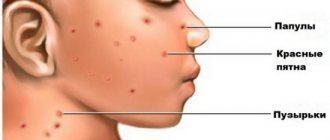Good afternoon, our dear readers. For many parents, the very period comes when they need to know how to wash their child’s hair. On the other hand, they say, what’s wrong with this, you wash it and that’s it. But for various reasons, a child develops a fear of washing his hair.
It’s different for everyone, some people wash their hair normally from a very young age and then everything is fine. But sometimes at the age of one or two, even three years, a fear of washing his hair appears and then the child cries, does not want to wash his hair and say a strict “no”.
Although he can calmly swim, play around in the water, play with toys, the main thing is that his head should not be touched.
We ourselves faced such a disaster with our little son. At first everything was fine, they washed their hair normally. Well, I was a little afraid, nothing terrible happened. Then water began to get into my mouth and nose. That’s when he flatly stated that he didn’t want to wash his hair; he was 2.5 years old at the time. It came to terrible screams and struggles (small children have so much strength, it’s terrible).
It was a difficult period and it turned out that many families are faced with this problem. We were able to overcome this, and we want to help other parents who are faced with this problem.
A child should not be afraid of water
When your baby is born, throw away all the grandmothers' advice and start bathing your baby in a large bathtub. Even if the baby plunges headlong, nothing terrible will happen. Diving in the bath strengthens the immune system and promotes the proper formation of the baby’s muscle corset. In addition, newborn children have the ability to swim by nature, and you will not have to teach him this in the future. The child will get used to water getting on his face and eyes, and will no longer be afraid to wet and wash his hair.
Practical advice on what to do when a child does not want to wash his hair.
Step 1.
First of all, pay attention to the child’s well-being.
If you initially know that the child will not agree to wash his hair, do not carry out the washing process until the evening. That is, if you usually bathe your baby in the evening, then choose a separate time for washing your hair - after morning or afternoon sleep, when the child is in the best mood and ready to play. Then it is easier to turn the washing process into a game.
Or maybe the baby is not in the mood or wants to eat?
And even if he gets upset, he can quickly switch to other interesting things and won’t have to calm down a cranky baby before bed. And in the evening - the usual swimming is a pleasure.
Step 2.
Next, remember that a child at any age is an individual, and has the right not to want something, even if you don’t like it. Respect his wishes. How is this respect expressed?
Talk about the need to wash your hair not at the moment when you need to wash it, but a day or two before. Come up with a short story about a girl (boy) who didn’t want to wash her hair and what came of it. Like how to wash a child's hair is useful.
If the child is over 4-5 years old, you can tell more serious options - study the structure of hair, talk about the mechanism of its pollution, etc. - my eldest loves this very much. If there is a problem, we begin to discuss it - from all sides. When understanding comes, it is easier to agree.
Step 3.
Be sure to ask the talking child about the reason for his dislike of washing his hair. Moreover, remember that he himself may not understand it, so it is better to offer options. I don’t like water in my eyes, water in my ears, it’s scary with my eyes closed, it stings, it’s unpleasant, or else watch it and think about what it could be. To determine and eliminate the cause, show attention by removing “your opinion” that all this is unimportant and just a whim, do not say the words “well, it’s not scary,” “what did you come up with,” etc.
Step 4.
Here's how to wash a child's hair if he doesn't want to wash it and can't be persuaded. After washing your hair, suggest that your son or daughter let you wash their hair. Usually the child enthusiastically awaits the moment when he can “be an adult” and also “do everything like his mother.” It is often advised to let your hair be washed before, not after, your baby.
But it doesn’t work for everyone, you need to take it into account.
Step 5.
In general, it’s a good idea to offer something interesting to do after you wash your baby’s hair. And it’s better to do something that is also connected with bathing - for example, wash the dolls, or let yourself be combed, or... your option. If your hair is not washed, there will be no game.
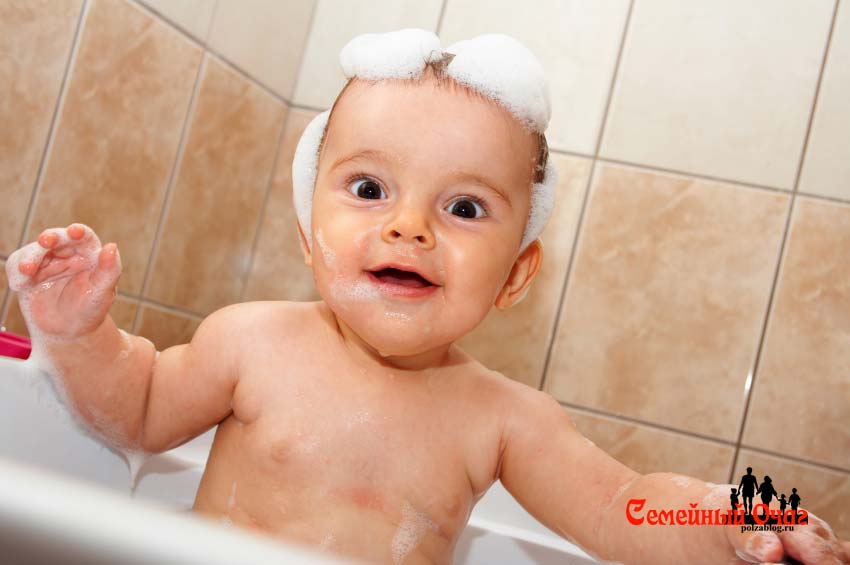
play with your baby while bathing
Step 6.
Also teach him to close his eyes tightly and pinch his ears, and then tilt his head back. It is this method that often helps to come to an agreement with the child. An important point: when the child tilts his head back, water begins to flow from his head into his eyes - this moment must be foreseen in advance and immediately give the child a towel to wipe his face.
Step 7
We continue to figure out how to wash a child’s hair. While washing your hair, if you’ve already managed to persuade, constantly comment on your actions, how you water your hair, how each strand gets wet, how you rinse your hairs, how clean they become, how the foam looks like magic lambs...
Step 8
If the reason is aversion to water in the eyes or ears, offer to cover the eyes or ears with a diaper or towel.
Step 9
And if the “I’m on my own” period has already arrived, the first way is to offer to wash your hair yourself, but with your help. You hold the shower and help rinse your hair. The rest is up to you. Try it, it’s not uncommon for kids to compromise, saying you wash it yourself, and mom or dad only helps.
Step 10
And the last “life hack on the topic of washing your hair” is to offer new devices for watering your hair every bath (ladle, plate, glass, cup, milk bottle, baby bucket, etc.. This game quickly captivates the baby and perhaps every bath will be expected with joy, because children love surprises so much!
You can play with an older child
If your baby is already 3-4 years old and still throws tantrums at the sight of shampoo, turn washing your hair into a fun game. Place a mirror at the baby's level and invite him to build funny figures out of foam. First, you can play with foam in the bath, and then invite your child to make a crown like a prince, ears like Mickey Mouse, or a comb like a chicken.
Read also: Games with a small child in the bath
How to overcome fear
- Do not Cry. You and your child need to acknowledge the fear of washing their hair. And therefore, you should not force or raise your voice at a child who is afraid of this, otherwise simple fear can develop into a phobia. Speak confidently and unquestioningly, but do not raise your tone.
- Explain. Talk to your baby and try to tell him that this process cannot be avoided and dirty hair needs shampoo. Explain that everyone washes their hair: both people and animals. And also try to get your child to understand that this process can be not only painless, but also very pleasant.
- Set it up. Before bathing, make sure that the child is in a good mood: he has eaten, played, and does not want to sleep. Under no circumstances force your child to wash his hair through a scandal.
- Play. Throw toys that your baby loves into the bathtub. Perhaps this will be fun for him. Play out the situation with washing your hair on dolls. Let the doll not like washing her hair at first, but you will show that it is not scary and she might even like it. The kid will think that if the doll is not scared, then he is even more so.
- Hold it. The child should feel confident that no water will get on him and this will work best if you hold his head with your hands.
- Protect. If your baby is afraid that water will get into his eyes, even when you are holding him nearby, then you should resort to other methods. First, you can give him a folded towel, and let the child independently control the drops of water that may fall on his face. And also he should cover his eyes with a towel when he raises his head after washing, because then the water drains, and you should warn the child about this. Secondly, you can purchase a special headband for swimming. It is put on the head, and all the water remains in the visor without getting on the face. Well, the last option is swimming goggles, which will be pressed tightly to your eyes and thus protect them.
- My own example. Show your baby that washing his hair is not scary, and he doesn’t like to do it completely in vain. You can wash your hair yourself and demonstrate the painlessness of the procedure, or let your baby do it. You can also take a bath with your child so that he always feels you near him.
- Do not be silent. The child must understand everything you do, so comment on your every action. You can also tell some fairy tales and in every possible way distract the baby from the unpleasant procedure.
- Have fun. Make washing your hair as enjoyable as possible for your baby. Splash water if it doesn't irritate him. Build him a foam crown, place it in front of a mirror, and let him create various “foam hairstyles.”
Shampoo should be not only useful, but also attractive
Nowadays, there are baby shampoos that do not contain dyes or fragrances. Of course, they are completely harmless, but they have neither color nor smell, and the bottle is not bright enough. The baby is more attracted to the delicious smell and beautiful rich color. Cast aside all doubts and wash your baby’s hair with what he likes, not you. Millions of mothers do this, and their children grow up healthy and, most importantly, happy. It is more interesting for a child to imagine that he is washing his hair with strawberry jam than with an eco-friendly shampoo without color and odor. This is how the world works. It's nothing you can do.
PS Of course, this only applies to those who do not have allergies.
Helpful information
The children's industry is constantly coming up with all sorts of “useful things” for young parents, trying to make their lives easier (and, of course, increase the range of products). There are devices for washing your hair that prevent water and foam from getting on your face, for example, plastic visors. You should not abuse them, otherwise the baby will get used to them and refuse to wash his hair without the usual attribute. Having gone on a visit or a long trip, you may forget it at home, and your vacation will turn into an eternal scandal, or your baby risks being left unwashed.
Devices for washing a child's hair.
In order to fully answer the question of how to wash a child’s hair, we will present you with various devices for bathing a child.
They are quite common and will help a child cope with fears, the main thing is to explain what it is and why it is needed.
- Put your child on swimming goggles.
- Wear a swimming headband (visor).
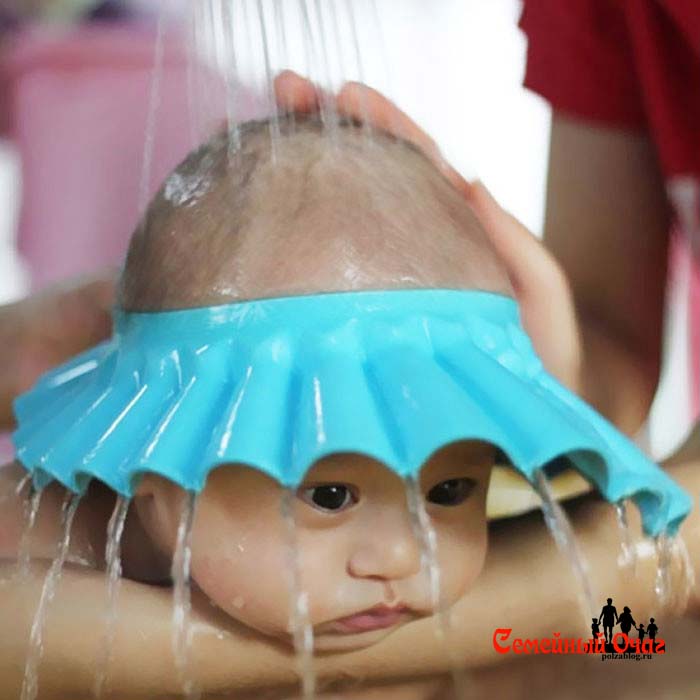
swim headband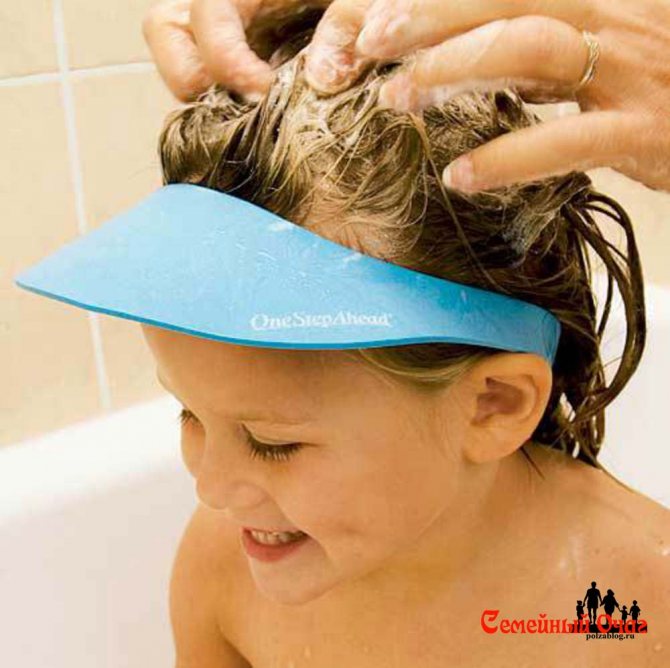
swimming visor - Give the child a towel (preferably folded thicker) so that he covers his face. The child holds a towel and immediately wipes his face as soon as water drips. This method has helped many.
- Do not rinse off the shampoo with a shower, but pour it from a ladle/jug/mug. There are even special mugs for washing your hair.
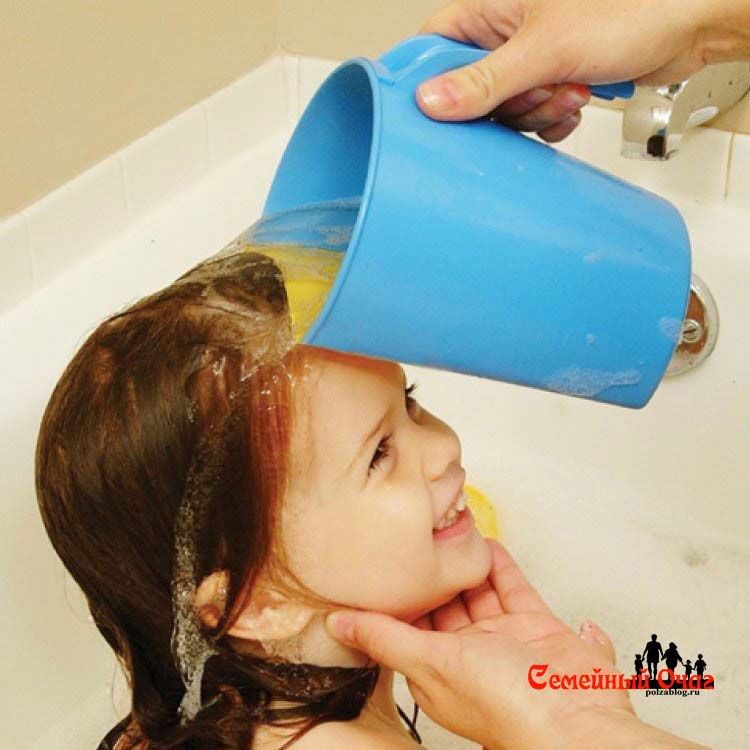
ladle for washing hair - Play washing hair on dolls/toys. You can lose at first, they say the bear is very afraid to wash his hair, because water gets into his eyes. But the bear really loves to walk and its fur gets dirty outside. Therefore, you still need to wash your hair. How can I help him? We will try to wash very carefully, so that water does not get into the eyes. After this, the bear is very happy and now is not afraid to wash his hair (this is a short example scenario, of course, variations are possible).
- Teach to close your eyes tightly and pinch your ears, and then tilt your head back. An important point: when the child tilts his head back, water begins to flow from his head into his eyes - this moment must be foreseen in advance and immediately give the child a towel to wipe his face.
After you have managed to wash your hair without getting your eyes wet, draw your baby’s attention to this: “Look, son, we washed our hair, but our eyes are dry! Isn't that great? What great fellows we are!”
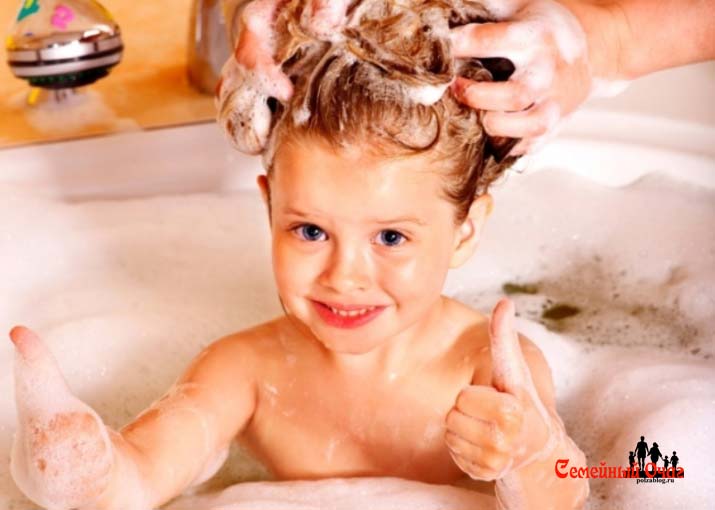
We managed to wash our heads - Well done!
That's all for us. We hope our article helped you, leave your comments below, maybe even share your method. That's all for now, join us on Odnoklassniki.
Based on materials from: jablogo.com, semya-vmeste.ru.
Let the child wash his own hair
Early childhood is the age when a child learns to do basic things on his own. And, most importantly, he really likes everything he does for the first time. Give him the opportunity to wash his hair on his own. Give shampoo, explain where to start, and calmly observe. It doesn’t matter that he’s still small, most likely everything will work out for him.
It’s amazing but true: there are children in the world who do not like to be spoon-fed. But as soon as they are allowed to show independence, the dish begins to rapidly disappear. There are also children who hate having their hair washed, but are happy to wash it themselves. There is no time to cry - you need to pour shampoo into your palms and smear it over your head. In general, pour yourself some tea and just watch the process.
Understand the reason for not washing your hair.
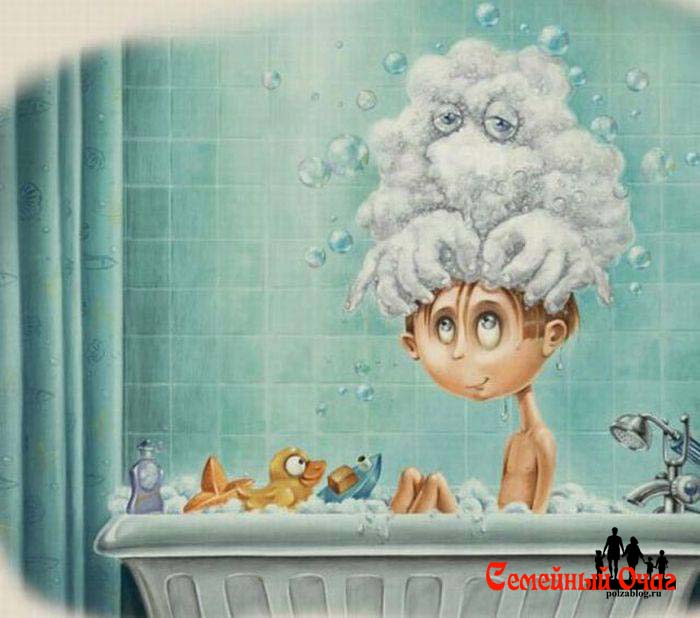
In order to further understand how to wash a child’s hair if he is afraid, you need to understand his fears. Do not scold your child under any circumstances, this can only worsen the whole situation. You just need to acknowledge his fear. Agree that he is scared to wash his hair.
The first reason why a child is afraid is fear:
- water gets into the eyes;
- into the nose;
- in the mouth;
- afraid of choking.
Perhaps there are some other reasons. If the child is already 2-2.5 years old, then you can talk to him and understand the essence of the problem. Don’t tell your child what’s wrong or something like that. Take the child's side. He must understand that you will protect him, that you will not do anything bad.
The second reason is “selfhood” and boundaries. Manifestation is possible from two to three years. That is, until this time everything is fine, and then suddenly - and nothing. Complete refusal to wash your hair. At the same time, the baby can happily splash around in the bathtub for a long time, play in the water, swim, but as soon as he washes it, it’s a resounding “no.”
The third reason is a fear of water, and a sudden one. Psychologists say that this is a period of child development and begins at approximately 3 - 5 years, not for everyone, of course.
But, you can come to an agreement with the child. You can learn to wash your hair without screaming and crying, maybe even the child will want to wash his hair himself. Below we will present the options that can help you with your child. But I’ll say right away: maybe everything will work out on the very first advice, or maybe more than one piece of advice will not work.
All children are very different and individual. First, understand the reason why the child does not want to wash his hair, and then try different methods that may suit your case.
A selection of gaming techniques
If a child is afraid to wash his hair, use a game to make the washing process easier.
- Invite the researcher to lather the hair of your favorite doll. We carry out all the necessary procedures. Undress and put in a bowl. Pour water and soap your hair. Wash off with water and wrap in a towel. We dry our hair. We comment on all the actions, how the doll likes to swim, she is clean, she has beautiful hair.
- You can also sit on a train and wash your hair like this: baby to the doll, and you to the baby.
- Ask an assistant (if your age allows) to soap your hair. He will pour water on your hair and lather it. And also wash off the foam and wrap it in a towel. The baby will blow on his hair with a hairdryer and dry it. By your example you will show that there is nothing to be afraid of.
- Bathing together encourages babies. Sitting with your child in the bathroom, you can gently soap his hair. He will feel you close and not be afraid (an option is to wash each other’s hair at the same time while sitting in the bathroom).
- If the bath allows, squeeze one drop of toothpaste onto the wall higher than the fidget's eyes, but so that he can reach it with his hand. Turn your baby to face the wall, give him a brush and let him paint with his head held high. It will be tilted back and will be convenient for you to rinse. In the meantime, while the child is interested, you can quickly take a bath.
- Does your baby do everything on his own? In the bathroom, you can direct it “me” to wash your hair. Let the assistant water the hair himself, lather himself and rinse off the foam. Then, dressed in pajamas, he dries his own hair. Help the little one if you see that he is having a hard time.
- When the hair is in foam, you can build a funny design from it (mohawk, protruding forelock, horns) and show it in the mirror.
- Playing diver will distract the fidget from unpleasant sensations. Put a mask or swimming goggles on your baby and the problem of water getting into the eyes will be solved.
- Colored bath foam has appeared on sale. While the little one is looking at it enthusiastically, you will have time to wash his hair. This foam has not only an attractive bright color, but also a delicious aroma.
- Offer to float on your back. The water will rinse your soapy hair on its own.
Now washing
your child’s
is not a problem, but another great reason to have a good time with your baby. Be healthy!
Pour water from glass to glass, play with rubber duckies, plop down. She may not get out of her bath for hours. But as soon as mommy wants to wash her hair, the tears begin - the child is afraid to wash her hair
. What to do if the child does not want to wash his hair?
A child under one year old does not need to wash his hair every day while taking a bath. It is enough to wash your baby’s hair two to three times a week.
A newborn baby's hair is usually thin, fluffy and short. In order to wash your baby's hair, it is best to buy a special shampoo for newborns. Baby shampoos for newborns usually do not irritate the eyes and are very gentle on the hairs. Usually mothers first experiment, choosing the right shampoo for their child. But then they settle on the product of one company. You can find a product that can be used to wash both the body and head of a newborn.
Why is a child afraid to wash his hair?
Fear is a necessary phenomenon; fear is one of the manifestations of the survival instinct. But what’s so scary about washing your hair, you ask? Often such fear arises at a very young age, when when water gets into the eyes, the baby stops seeing the world clearly and, naturally, gets scared by this. In addition, getting water on the face causes an insurmountable fear of suffocation in the child, because the baby does not yet know how to clearly control holding his breath. Getting water with shampoo into the eyes, which can cause pain, is all the more frightening for the baby.
